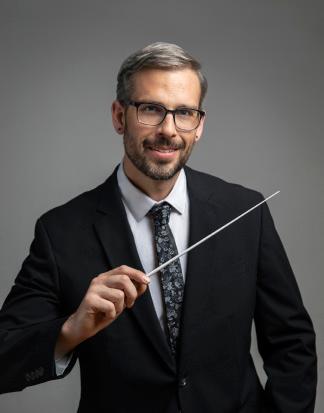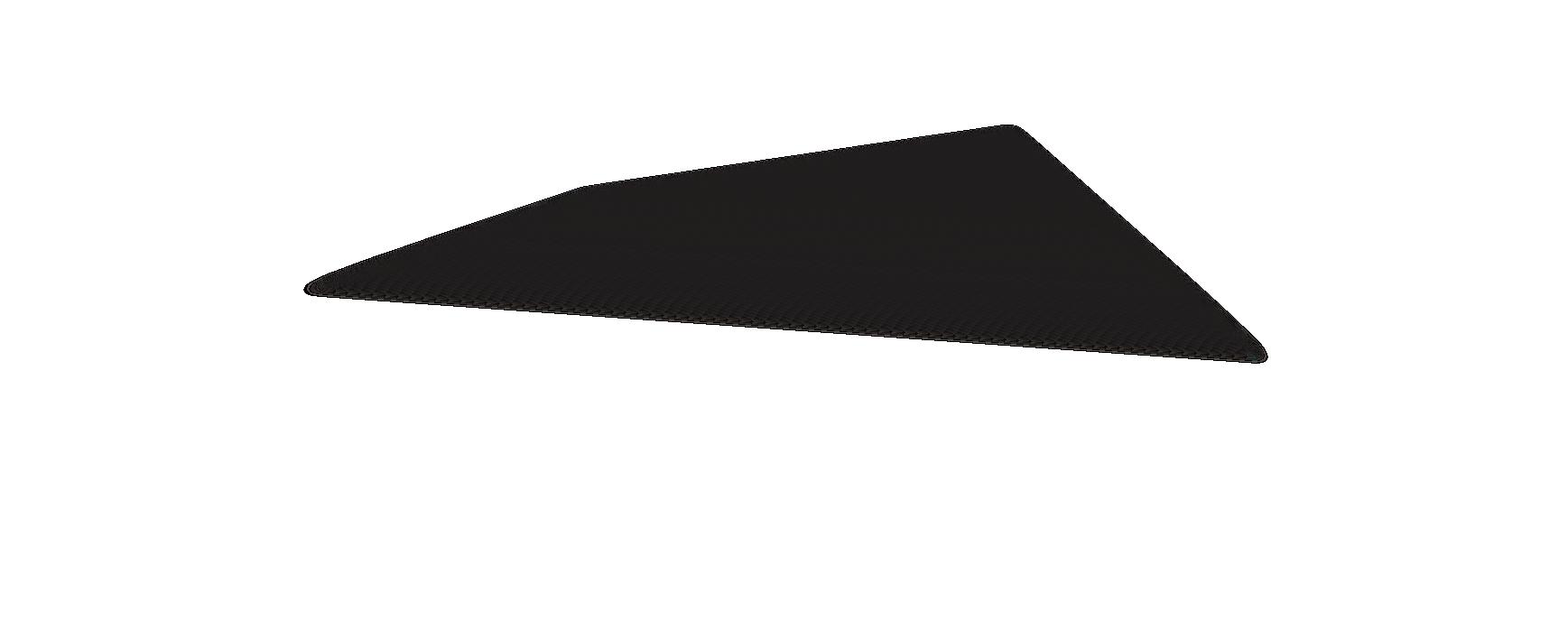A Tale of Two

Conducted by Rachel Waddell
Rob Stahly, Assistant Conductor
FEBRUARY 25, 4 P.M. ORGAN RECITAL HALL / FREE
CSU CONCERT ORCHESTRA PRESENTS
CONCERT ORCHESTRA
FEBRUARY 25, 2024 | 4 P.M. | ORGAN RECITAL HALL
A Tale of Two Concerti Grossi
DR. RACHEL WADDELL, Music Director and Conductor ROB STAHLY, Assistant Conductor Program:
Concerto Grosso
Ralph Vaughan Williams (1872-1958)
I. Intrada
III. Sarabande
V. March and Reprise
Brandenburg Grosso No. 3 in G Major
Johann Sebastian Bach (1685-1750)
I.
II. Adagio
III. Allegro
PERSONNEL
Dr. Rachel Waddell, Music Director and Conductor
Rob Stahly, Assistant Conductor
Bach, Brandenburg Concerto No. 3: Violin
VIOLIN 1
Patrick Cook, Concertmaster
Angel Bustillos
Chris Snell
VIOLIN 2
Casey Lee, Principal
Lydia Johnsen
Andy Romero
Jennifer Clary
VIOLIN 3
Scarlett Garsombke, Principal
Case Rasumussen
Tesia Lin
Caitlyn Hasebrook
Cheryl Hite
Vaughan Williams, Concerto Grosso: Violin
CONCERTINO
Casey Lee, Concertmaster
Patrick Cook, 1
Angel Bustillos, 1
Lydia Johnsen, Principal 2
Chris Snell, 2
Case Rasumussen, 2
VIOLA 1
TUTTI
Scarlett Garsombke, Principal
Andy Romero, 1
Tesia Lin, Principal 2
Caitlyn Hasebrook, 2
Cheryl Hite, 2
Jennifer Clary, 2
Bach, Brandenburg Concerto No. 3: Viola
Sonia Enger, Principal
Bella Penna
VIOLA 2
Annabelle Thomas
Laurel Ave
Vaughan Williams, Concerto Grosso: Viola
CONCERTINO
Sonia Enger, Principal
Laurel Ave
VIOLA 3
Laurel Ave
Rachel Waddell
TUTTI
Bella Penna, Principal
Annabelle Thomas
Kierra Jewel
Bach, Brandenburg Concerto No. 3: Cello
CELLO 1
Tyler Chrenka, Principal
Griffin Foundos
CELLO 2
Sophia Hyman
Rob Stahly
Vaughan Williams, Concerto Grosso: Cello
Concertino
Tyler Chrenka, Principal
Sophia Hyman
Rob Stahly
Tutti
CELLO 3
Sophie Ruszel
Margaret Pulsifer
Griffin Foundos, Principal
Sophie Ruszel
Margaret Pulsifer
BASS:
Hunter Dominguez, Principal on Bach and Concertino Bass Principal in Concerto Grosso
Carmylla Powers, Tutti Principal in Concerto Grosso
Keenan Loflin, Play Concertino Part in Concerto Grosso
Harrison Deters, Play Tutti Part in Concerto Grosso
Isaac Hermanson, Play Tutti Part in Concerto Grosso
HARPSICHORD/ORGAN
Kandin Theis
LIBRARIAN:
Rob Stahly, Head Librarian
Lamarana Balde
PROGRAM NOTES
Concerto Grosso
Ralph Vaughan Williams (1872-1958)
In British music, we usually think of Gustav Holst, not Ralph Vaughan Williams, as the composer of educational music. However, there were times when Vaughan Williams was called on to write something for students, and he always responded with enthusiasm. Vaughan Williams managed to treat the modest abilities of student musicians as a challenge to his skills: to express his musical conceptions within the framework of their capabilities.
This was the case with the Concerto Grosso. Early in 1950, three English music educators approached the composer with a request for a large work for the strings program of the Rural Music Schools. The idea intrigued Vaughan Williams, and he immediately planned music that would involve three string orchestras, each of a different level of skill. By mid-April, the work was done and was given a run-through. The official premiere took place in November at the Albert Hall. The orchestra of more than 400 players nearly filled the venue. Conducted by Sir Adrian Boult, the Concerto Grosso was a resounding success. In subsequent performances and recordings, the easy (ad libitum) parts have generally been omitted, leaving the more usual Baroque concerto grosso duality: difficult concertino music pitted against moderately difficult ripieno music played by a larger group.
Musically, the Concerto Grosso takes more than its title and part distribution from older music. It opens with a brilliant, grand “Intrada,” the hallmark of Baroque opera entrances. The “March and Reprise” movement starts off with a lively quick-march such as only a British composer can write. However, just as we are getting along with the march, Vaughan Williams resolves it into a literal reprise of the opening “Intrada.” His genius is fascinating here, since music originally signaling the beginning now feels completely right as a summing-up of the entire work. Having taken us on a tour of various moods and dance rhythms, the composer now brings us full circle, turning a grand opening into an even grander ending.
— Program Notes by Dr. Michael Fink © 2023 ALL RIGHTS RESERVED, Rhode Island Philharmonic Orchestra and School
Brandenburg Grosso No. 3 in G Major Johann Sebastian Bach (1685-1750)
On March 24, 1721, Johann Sebastian Bach (1685-1750) dedicated six “concertos with several instruments” to Margrave Christian Ludwig of Brandenburg. The dedication offers a bit of insight into the social position occupied by one of Europe’s most talented composers during his lifetime. The Margrave had apparently shown an interest in Bach’s music at a previous meeting and asked to see some of the composer’s work. Bach obsequiously obliged, writing, “I have then in accordance with Your Highness’ most gracious orders taken the liberty of rendering my most humble duty to Your Royal Highness with the present concertos, which I have adapted to several instruments; begging Your Highness most humbly not to judge their imperfection with the rigor of the fine and delicate taste that the whole world knows Your Highness has for musical pieces; but rather to infer from them in benign consideration the profound respect and the most humble obedience that I try to show Your Highness therewith.” (No wonder there was a French Revolution!)
Bach’s Brandenburg Concertos, as they have come to be known because of their dedicatee, are among the most perfect examples of the Baroque concerto that we have today. Few works in the history of music match their tireless invention, their colorful instrumentation, or the tremendous demands they make on performers.
The Third Concerto, for nine solo strings (three each of violins, violas, and cellos) and continuo, opens majestically, with the soloists grouped by instrument (the violins play one figure, the violas another, and the cellos a third). As the movement progresses, these divisions hold for the most part, although there are moments of independence for each of the soloists. The closing movement, a vigorous allegro, follows the pattern of the opening, with the nine players divided again by instrument. The two outer movements are separated by a two-note adagio cadence, during which Bach intended the musicians to improvise a link between the two sections of the concerto.
— John Mangum, Los Angeles Philharmonic
The CSU Symphony Orchestra wishes to thank:
Margaret Miller
Romina Monsanto
Mike Solo
Valerie Reed, Peter Muller, and their Team
Jennifer Clary
Nicole Darling
Jim Doser
Ram Productions
Ethan Urtz
Rob Stahly
COLORADO STATE UNIVERSITY MUSIC APPLIED FACULTY
Violin
Ron Francois
Leslie Stewart
Viola
Margaret Miller
Cello
Romina Monsanto
Bass
Forest Greenough
Guitar
Jeff Laquatra
Flute
Ysmael Reyes
Michelle Stanley
Oboe
Pablo Hernandez
Clarinet
Wesley Ferreira
Sergei Vassiliev
Saxophone
Peter Sommer
Dan Goble
Bassoon
Cayla Bellamy
Trumpet
Stanley Curtis
Horn
John McGuire
Trombone
Drew Leslie
Tuba/Euphonium
Stephen Dombrowski
Percussion
Eric Hollenbeck
Shilo Stroman
Harp
Kathryn Harms
Piano
Bryan Wallick
Tim Burns
Organ
Joel Bacon
Voice
Nicole Asel
Tiffany Blake
John Lindsey

With energy, imagination, and a passion for people, American conductor RACHEL WADDELL proves an unabashed advocate for the 21st century orchestra. Her leadership across the country demonstrates her innate ability to transform vision into action. Rachel believes by uplifting, celebrating, and reflecting the artistry of our neighbors, orchestras become the creative heartbeat of our communities. Through breathtaking collaborations and an untiring dedication to education, mentorship, and community, Rachel inspires transformative experiences and ensembles.
Rachel serves as the newly appointed Director of Orchestras at Colorado State University. Previously she was the Director of Orchestral Activities and Assistant Professor with the Arthur Satz Department of Music at the University of Rochester in New York. The UR Orchestras gained recognition as a two-time national winner for the American Prize’s Vytautas Marijosius Memorial Award in Orchestral Programming in 2019 and 2020. In 2021, they won international acclaim in collaboration with conducting colleague Tiffany Chang and Oberlin Conservatory through a digital performance of Beethoven’s Choral Fantasy, named Best Instrumental Performance of 2021 by the LIT Talent Awards.
Rachel maintains a busy profile in the professional and academic worlds. She has conducted orchestras around the world including the Orchestre Métropolitain, the Rochester, Las Vegas, and Fort Wayne Philharmonics, the Southwest Michigan Symphony Orchestra (where she was a Music Director Finalist) and Cleveland’s Suburban Symphony. While serving as the Associate Conductor of the Canton Symphony Orchestra in Ohio, Rachel conducted over 80 performances of classical, pops, and education concerts. She has attended numerous conducting programs including the Dallas Opera’s prestigious Hart Institute for Women Conductors, and Mark Shapiro’s Conducting Intensive at Juilliard. In August 2022 she made her Vienna debut conducting Così fan tutte as part of the Vienna Opera Academy. In July 2023 she made her Canadian debut with the Orchestre Métropolitain, after being selected to conduct by Yannick Nézet-Séguin at Le Domaine Forget de Charlevoix.
Rachel’s interest in the constantly evolving role and responsibility of orchestras within their communities led her to co-found Conductors for Change, Inc., a 501(c)(3) for anyone reimagining the future of the American orchestra.
Rachel holds a DMA in Orchestra Conducting from the University of Nevada, Las Vegas, and a certificate in Music Industry Essentials from the prestigious Clive Davis Institute of Recorded Music at NYU’s Tisch School of the Arts.

Conductor ROBERT STAHLY passionately furthers orchestral music through programs that reimagine classical works alongside engaging new and underperformed works. Mr. Stahly made his debut conducting Copland’s “The Tender Land” in the Spring of 2023 at Colorado State University. He also conducted portions of Mozart’s “The Marriage of Figaro” and “Symphony No. 33” in performance at the CCM Opera Bootcamp. Perpetually studying his craft, Mr. Stahly additionally participated in conducting workshops at the Eastman School of Music, Bard College, University of Missouri Kansas City, and University of Colorado. His conducting teachers include Harold Farberman, Gianmaria Griglio, Mark Gibson, Apo Hsu, Neil Varon, Kevin Noe, Gary Lewis, Wes Kenney, and Dr. Rachel Waddell.
Mr. Stahly is the Apprentice Conductor for the Fort Collins Symphony, the Conductor of the Denver Young Artists Orchestra String Ensemble and former Conductor of the Longmont Youth Symphony String Ensemble. Active as a performer, he is the former Associate Principal Cellist with the Longmont Symphony Orchestra and is the cellist for the Elevation String Quartet. A conductor who is passionate about music education, Mr. Stahly continues to visit school music programs to coach new generations of musicians and teachers. During his 13 years at Longmont High School Mr. Stahly tripled the size of the orchestra program while at the same time increasing the quality and diversity of the ensembles. In 2016, he was recognized as one of the top six educators in the St. Vrain Valley School District with an “Encore Award” and in 2019 he was a finalist for “Teacher of the Year.” Mr. Stahly received Bachelor’s Degrees in Music Education, Tuba Performance, and a String Pedagogy Certificate from Colorado State University in 2008. In 2022 he returned to CSU to pursue a Master’s Degree in Orchestral Conducting.







/csu Member FDIC Your Pride Should Go Where You Do. Show your pride year-round with our exclusive CSU Visa® Debit Cards, free with any FNBO Checking Account. Visit us online, or stop by a branch to open your account today. SHOW YOUR CS U RAMS PRIDE.










